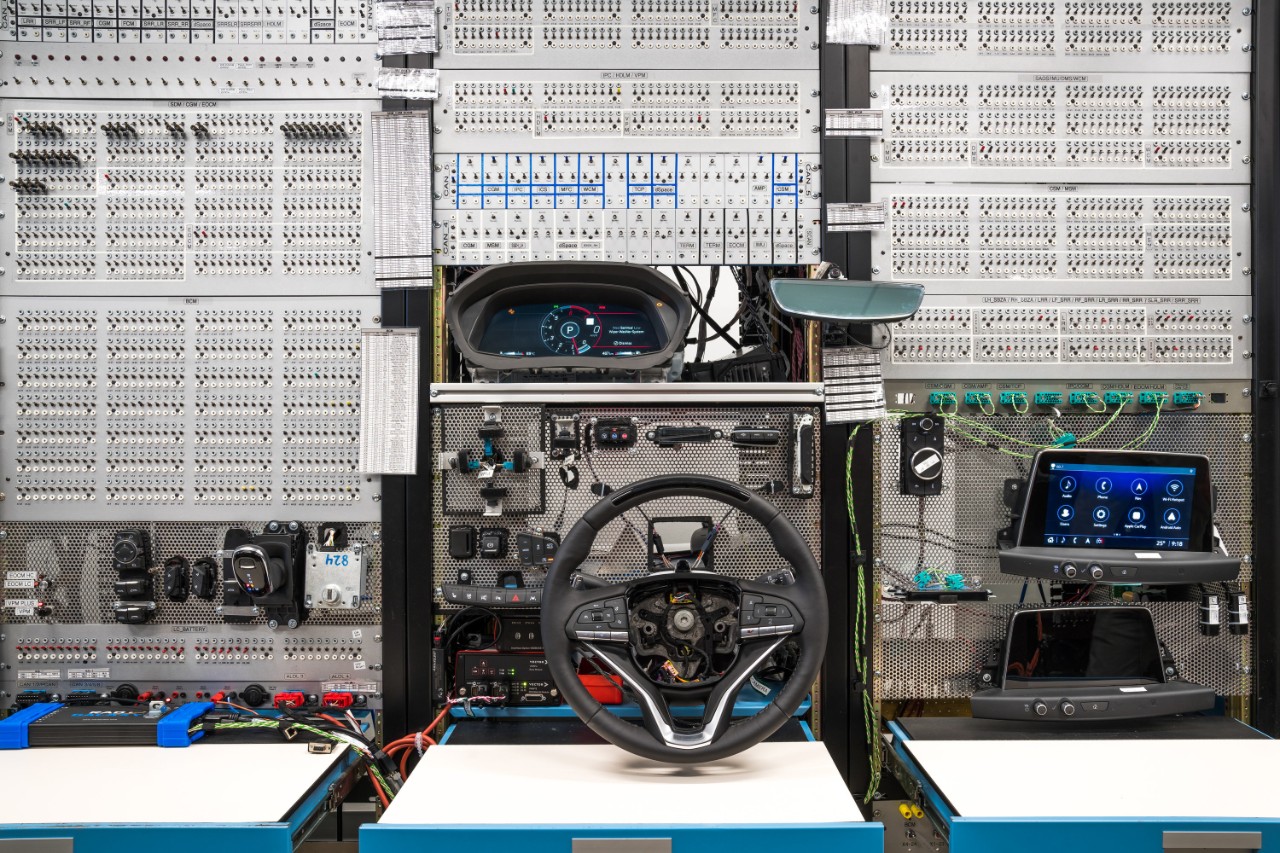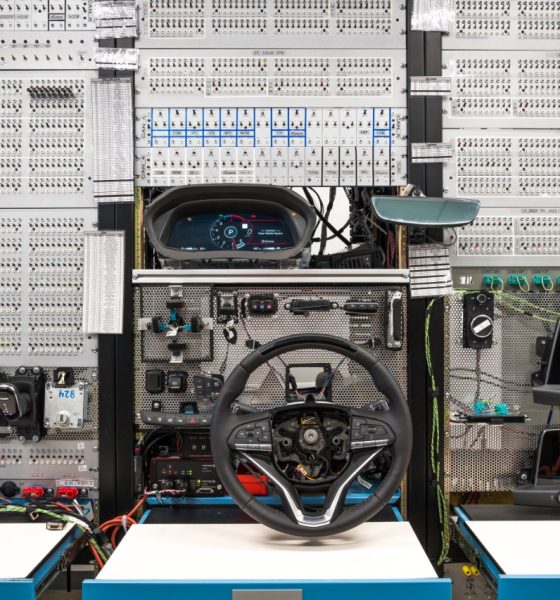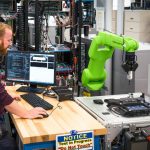

News
GM looks to close gap from Tesla with sizable EV tech hiring ramp
General Motors has announced that it will begin hiring 3,000 new employees across engineering, design, and information technology through Q1 201 in an attempt to begin preparing for a massive transition to produce all-electric vehicles.
In a press release from November 9th, GM announced its intentions to hire new talent that could introduce fresh ideas and innovative designs as the company begins to prepare for the “development of autonomous and electric vehicles and advanced platforms like the Ultium battery system.” The plan intends to increase GM’s efficiency as it transitions to new powertrains and vehicle types while keeping costs low to allow for affordable models for customers.
GM to hire 3,000 people to work on future products and "software as a service". Company expects an inflection mid-decade where public demand for EV's will increase, and with it, will come greater demand for software related services. $GM
— Phil LeBeau (@Lebeaucarnews) November 9, 2020
“As we evolve and grow our software expertise and services, it’s important that we continue to recruit and add diverse talent. This will clearly show that we’re committed to further developing the software we need to lead in EVs, enhance the customer experience, and become a software expertise-driven workforce,” GM President Mark Reuss said.
GM’s first steps in refining their new EV project involve developing and integrating “world-class software and services” that will increase the company’s vision for the future. This includes zero crashes, zero emissions, zero congestion, the press release says. There will be no shortage of employment opportunities. Everything from electrical engineers to infotainment software developers is being sought out by the legacy automaker, building onto the already-existing GM platform.
- General Motors announced Monday, Nov. 9, 2020 it will hire 3,000 new employees across engineering, design and IT to help transform the future of product development and software as a service. GM will offer more remote opportunities than ever before as development of autonomous and electric vehicles and advanced platforms like the Ultium battery system continue at a fast pace. GM Software Automation Engineer Daniel Heintzel works with a telematics robot Wednesday, September 19, 2019 at the GM Infotainment Lab in Warren, Michigan. This facility now follows GM-mandated guidelines to help protect against the spread of COVID-19, including mandatory use of face masks and social distancing. (Photo by John F. Martin for General Motors)
- General Motors announced Monday, Nov. 9, 2020 it will hire 3,000 new employees across engineering, design and IT to help transform the future of product development and software as a service. GM will offer more remote opportunities than ever before as development of autonomous and electric vehicles and advanced platforms like the Ultium battery system continue at a fast pace. GM Software Test Engineer Shashank Lakshmikanth conducts connectivity checks and stress tests Wednesday, September 19, 2019 at the GM Infotainment Lab in Warren, Michigan. This facility now follows GM-mandated guidelines to help protect against the spread of COVID-19, including mandatory use of face masks and social distancing. (Photo by John F. Martin for General Motors)
- General Motors announced Monday, Nov. 9, 2020 it will hire 3,000 new employees across engineering, design and IT to help transform the future of product development and software as a service. GM will offer more remote opportunities than ever before as development of autonomous and electric vehicles and advanced platforms like the Ultium battery system continue at a fast pace. GM System Bench Lead Engineer Radha Iyer performs tests at the full system bench Wednesday, September 19, 2019 at the GM Electrical Integration Lab in Warren, Michigan. This facility now follows GM-mandated guidelines to help protect against the spread of COVID-19, including mandatory use of face masks and social distancing. (Photo by John F. Martin for General Motors)
Additionally, GM plans to improve upon its Vehicle Intelligence Platform, which includes its Tesla Autopilot rival, Super Cruise, a driver assistance feature. Recently, Consumer Reports controversially ranked Super Cruise above Tesla’s Autopilot, stating that the Elon Musk-headed company was a “distant second” compared to General Motors’ software.
GM has adopted a somewhat opened-mind regarding EVs and alternative forms of energy for passenger transportation. It has unveiled its Hummer EV, which will bring both the Tesla Cybertruck and the Rivian R1T some competition in the electric pickup truck market. However, some are still skeptical about GM’s total commitment to a full EV transition.
While the legacy automaker has committed to building 20 new fully-electric cars by 2023, it has also stated that it plans to allocate more than $20 billion of capital and engineering resources to its future EV programs through the next five years.

News
Elon Musk’s Grok AI to be used in U.S. War Department’s bespoke AI platform
The partnership aims to provide advanced capabilities to 3 million military and civilian personnel.

The U.S. Department of War announced Monday an agreement with Elon Musk’s xAI to embed the company’s frontier artificial intelligence systems, powered by the Grok family of models, into the department’s bespoke AI platform GenAI.mil.
The partnership aims to provide advanced capabilities to 3 million military and civilian personnel, with initial deployment targeted for early 2026 at Impact Level 5 (IL5) for secure handling of Controlled Unclassified Information.
xAI Integration
As noted by the War Department’s press release, GenAI.mil, its bespoke AI platform, will gain xAI for the Government’s suite of tools, which enable real-time global insights from the X platform for “decisive information advantage.” The rollout builds on xAI’s July launch of products for U.S. government customers, including federal, state, local, and national security use cases.
“Targeted for initial deployment in early 2026, this integration will allow all military and civilian personnel to use xAI’s capabilities at Impact Level 5 (IL5), enabling the secure handling of Controlled Unclassified Information (CUI) in daily workflows. Users will also gain access to real‑time global insights from the X platform, providing War Department personnel with a decisive information advantage,” the Department of War wrote in a press release.
Strategic advantages
The deal marks another step in the Department of War’s efforts to use cutting-edge AI in its operations. xAI, for its part, highlighted that its tools can support administrative tasks at the federal, state and local levels, as well as “critical mission use cases” at the front line of military operations.
“The War Department will continue scaling an AI ecosystem built for speed, security, and decision superiority. Newly IL5-certified capabilities will empower every aspect of the Department’s workforce, turning AI into a daily operational asset. This announcement marks another milestone in America’s AI revolution, and the War Department is driving that momentum forward,” the War Department noted.
News
Tesla FSD (Supervised) v14.2.2 starts rolling out
The update focuses on smoother real-world performance, better obstacle awareness, and precise end-of-trip routing, among other improvements.

Tesla has started rolling out Full Self-Driving (Supervised) v14.2.2, bringing further refinements to its most advanced driver-assist system. The new FSD update focuses on smoother real-world performance, better obstacle awareness, and precise end-of-trip routing, among other improvements.
Key FSD v14.2.2 improvements
As noted by Not a Tesla App, FSD v14.2.2 upgrades the vision encoder neural network with higher resolution features, enhancing detection of emergency vehicles, road obstacles, and human gestures. New Arrival Options let users select preferred drop-off styles, such as Parking Lot, Street, Driveway, Parking Garage, or Curbside, with the navigation pin automatically adjusting to the user’s ideal spot for precision.
Other additions include pulling over for emergency vehicles, real-time vision-based detours for blocked roads, improved gate and debris handling, and extreme Speed Profiles for customized driving styles. Reliability gains cover fault recovery, residue alerts on the windshield, and automatic narrow-field camera washing for new 2026 Model Y units.
FSD v14.2.2 also boosts unprotected turns, lane changes, cut-ins, and school bus scenarios, among other things. Tesla also noted that users’ FSD statistics will be saved under Controls > Autopilot, which should help drivers easily view how much they are using FSD in their daily drives.
Key FSD v14.2.2 release notes
Full Self-Driving (Supervised) v14.2.2 includes:
- Upgraded the neural network vision encoder, leveraging higher resolution features to further improve scenarios like handling emergency vehicles, obstacles on the road, and human gestures.
- Added Arrival Options for you to select where FSD should park: in a Parking Lot, on the Street, in a Driveway, in a Parking Garage, or at the Curbside.
- Added handling to pull over or yield for emergency vehicles (e.g. police cars, fire trucks, ambulances).
- Added navigation and routing into the vision-based neural network for real-time handling of blocked roads and detours.
- Added additional Speed Profile to further customize driving style preference.
- Improved handling for static and dynamic gates.
- Improved offsetting for road debris (e.g. tires, tree branches, boxes).
- Improve handling of several scenarios, including unprotected turns, lane changes, vehicle cut-ins, and school buses.
- Improved FSD’s ability to manage system faults and recover smoothly from degraded operation for enhanced reliability.
- Added alerting for residue build-up on interior windshield that may impact front camera visibility. If affected, visit Service for cleaning!
- Added automatic narrow field washing to provide rapid and efficient front camera self-cleaning, and optimize aerodynamics wash at higher vehicle speed.
- Camera visibility can lead to increased attention monitoring sensitivity.
Upcoming Improvements:
- Overall smoothness and sentience.
- Parking spot selection and parking quality.
News
Tesla is not sparing any expense in ensuring the Cybercab is safe
Images shared by the longtime watcher showed 16 Cybercab prototypes parked near Giga Texas’ dedicated crash test facility.

The Tesla Cybercab could very well be the safest taxi on the road when it is released and deployed for public use. This was, at least, hinted at by the intensive safety tests that Tesla seems to be putting the autonomous two-seater through at its Giga Texas crash test facility.
Intensive crash tests
As per recent images from longtime Giga Texas watcher and drone operator Joe Tegtmeyer, Tesla seems to be very busy crash testing Cybercab units. Images shared by the longtime watcher showed 16 Cybercab prototypes parked near Giga Texas’ dedicated crash test facility just before the holidays.
Tegtmeyer’s aerial photos showed the prototypes clustered outside the factory’s testing building. Some uncovered Cybercabs showed notable damage and one even had its airbags engaged. With Cybercab production expected to start in about 130 days, it appears that Tesla is very busy ensuring that its autonomous two-seater ends up becoming the safest taxi on public roads.
Prioritizing safety
With no human driver controls, the Cybercab demands exceptional active and passive safety systems to protect occupants in any scenario. Considering Tesla’s reputation, it is then understandable that the company seems to be sparing no expense in ensuring that the Cybercab is as safe as possible.
Tesla’s focus on safety was recently highlighted when the Cybertruck achieved a Top Safety Pick+ rating from the Insurance Institute for Highway Safety (IIHS). This was a notable victory for the Cybertruck as critics have long claimed that the vehicle will be one of, if not the, most unsafe truck on the road due to its appearance. The vehicle’s Top Safety Pick+ rating, if any, simply proved that Tesla never neglects to make its cars as safe as possible, and that definitely includes the Cybercab.











